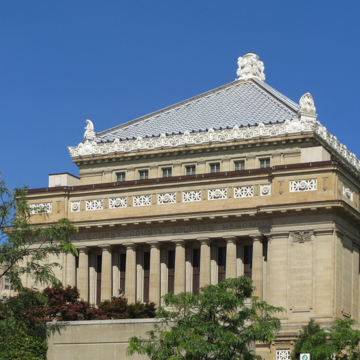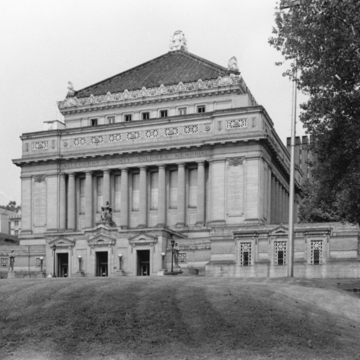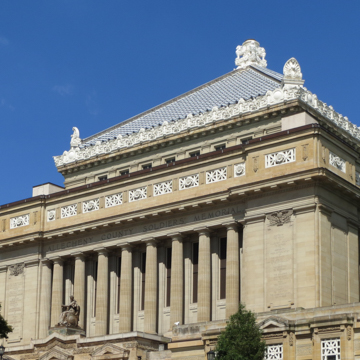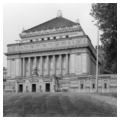You are here
Soldiers' and Sailors' National Military Museum and Memorial Hall
In 1903, in the largest real estate transaction in Pittsburgh history to that point, Cleveland-born Franklin Nicola purchased a 103-acre enclave at the base of Oakland hill from the estate of Mary Schenley. This long-delayed tribute to local veterans of the Civil War stands on part of that land. After Henry Hornbostel, as the local favorite, won the competition against the much more senior Cass Gilbert, John Russell Pope, and Ernest Flagg, he faced a second hurdle: the siting. The building was to have faced east, toward Bigelow Boulevard, but Hornbostel convinced the county commissioners to rotate the plan, so it now faces south, fronted by a great lawn to 5th Avenue.
The sandstone memorial, an adaptation of the Mausoleum of Halicarnassus, stands on a high concave podium, with meeting rooms set at the corners of the base. Engaged Doric columns and a triplex of doorways give a heroic scale to the three main facades, but more prominent still is the cast-concrete pyramidal roof. The cornice is the best in Pittsburgh, its linked eagles furthering the memorial's historicizing aura with the Roman symbol for military power. Charles Keck's bronze statue of America stands above the main entrance.
Writing Credits
If SAH Archipedia has been useful to you, please consider supporting it.
SAH Archipedia tells the story of the United States through its buildings, landscapes, and cities. This freely available resource empowers the public with authoritative knowledge that deepens their understanding and appreciation of the built environment. But the Society of Architectural Historians, which created SAH Archipedia with University of Virginia Press, needs your support to maintain the high-caliber research, writing, photography, cartography, editing, design, and programming that make SAH Archipedia a trusted online resource available to all who value the history of place, heritage tourism, and learning.







